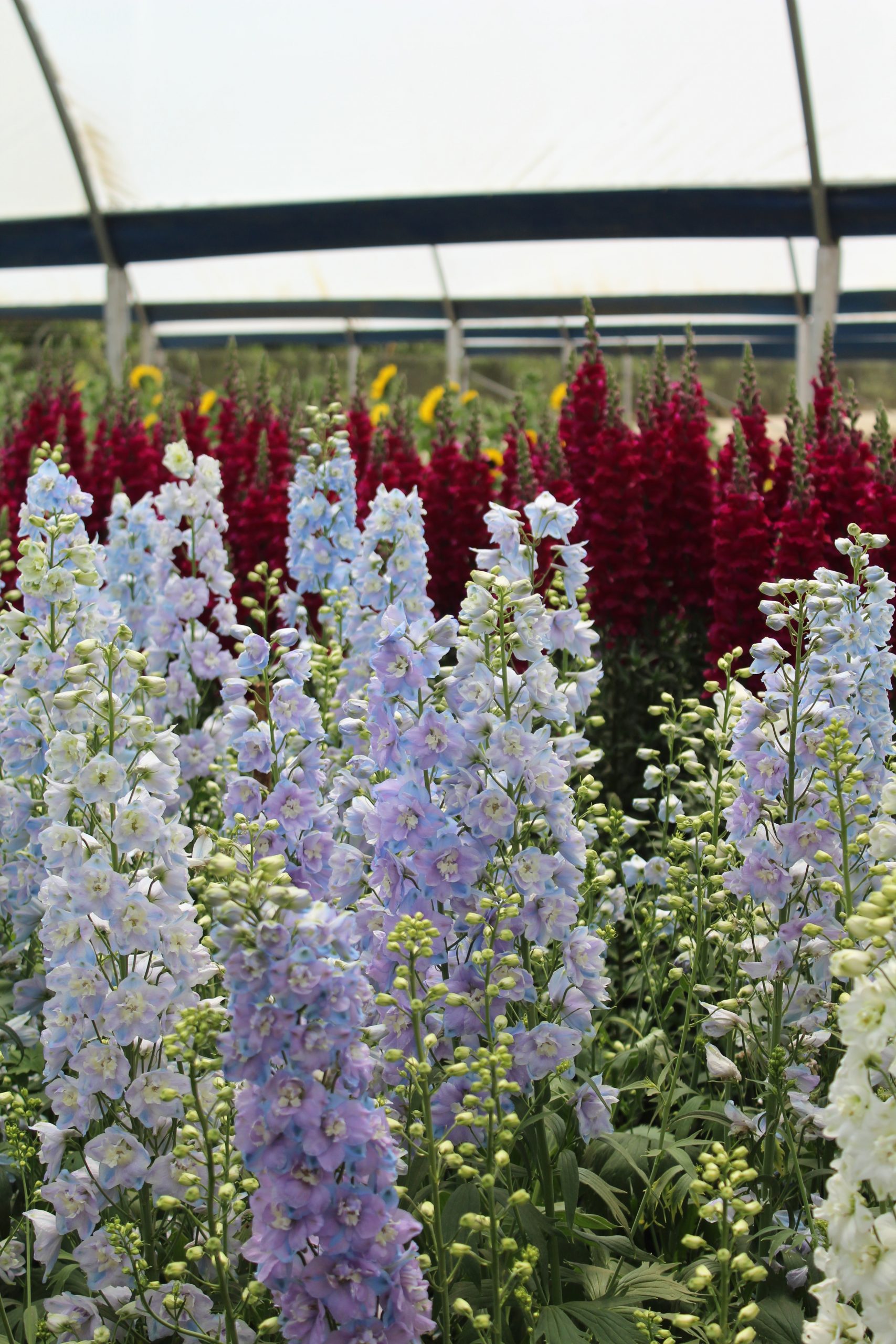Last Updated on January 11, 2022 by Real Men Sow
Delphinium, a cottage garden and herbaceous border staple, stands out because of its height and color. They can be mixed with roses, peonies, and other vertical flowers like verbascums and lupins. They are loved by bees, and look beautiful in a vase.

Although most delphiniums can be grown as perennials, there are also biennial and annual varieties. They require care to look good. They require protection from slugs in spring and staking. They also need plenty of food. You may get a second flush in September if you trim them to the ground after they have finished flowering.
How to Grow Delphinium
Plant delphiniums in well-drained, moist soil that is in full sunlight. If you have very heavy soil, delphiniums will struggle to grow in it. To aid drainage, add grit to your planting hole. As soon as the shoots begin to grow, protect them from slugs. You should feed your plants with a high-potash fertilizer once a week. Cut back stems after flowering to encourage another flush of blooms. Mulch in autumn using well-rotted manure and leaf mould which you can easily make by yourself.
Where to Grow Delphiniums
To get the best results, delphiniums should be grown in well-drained soil that is moist and in full sunlight. The tallest Delphiniums should be placed at the back of a sunny area. Wind can cause plants to become suffocated in windy areas.
When and How To Plant Delphinium
A delphinium can be planted at any time, but it is best to plant it in spring or autumn as the soil will remain warm and moist. For a nutritional boost, dig a hole in the ground and put compost or well-rotted horse manure in it. Winter wet conditions can make delphiniums prone to rot, so you may need to add grit or manure to improve drainage. Place your delphinium in the same place it was in the pot. Then, back-fill with soil and firm up gently. Water in well.
Taking Care of Delphinium
Delphiniums need to be fed regularly because they are very hungry. To encourage strong growth, apply a liquid fertilizer every few weeks after the first shoots begin to appear.
Spring is the best time to stake taller plants, either using canes or a frame that allows them to grow upward. The best climate for Delphiniums is cooler, with slightly moist soil during summer. However, plants should not be dried out in hot conditions.
Even though delphiniums only have a short flowering season they can still produce flowers by cutting back the flower spikes as soon as they are gone.
The proper way to cut Delphinium back:
- When the flower spikes start to look tired, trim every stem to the ground. Leave any side shoots and other foliage at the base.
- Make sure to water the plant regularly
After the plants have finished flowering in autumn, you can cut them back to the ground. Divide plants every year in spring to keep them flowering.
Propagating Delphiniums
Delphiniums can be grown from seeds. There are many varieties to choose from, or you could save your own. You can sow in February, June, September or October. Place seeds in small pots and seed trays, and keep the temperature at 50°-60°F.
You can propagate delphiniums by taking cuttings from the base (basal cuttings), in spring.
- Take a pair of scissors and trim the shoots just below the soil surface in spring when the new shoots are appearing. Each plant will yield one to two shoots.
- To keep moisture out, place the cut immediately in a bag made of polythene.
- Take some of the foliage off the top and leave a few leaves for the roots.
- Each cut should be placed in a small container with perlite and multipurpose compost.
- To keep the moisture in, water and cover the leaves with polythene bags. Mist frequently to prevent them drying out.
- You can keep your plants in the greenhouse, or on a sunny windowsill.

